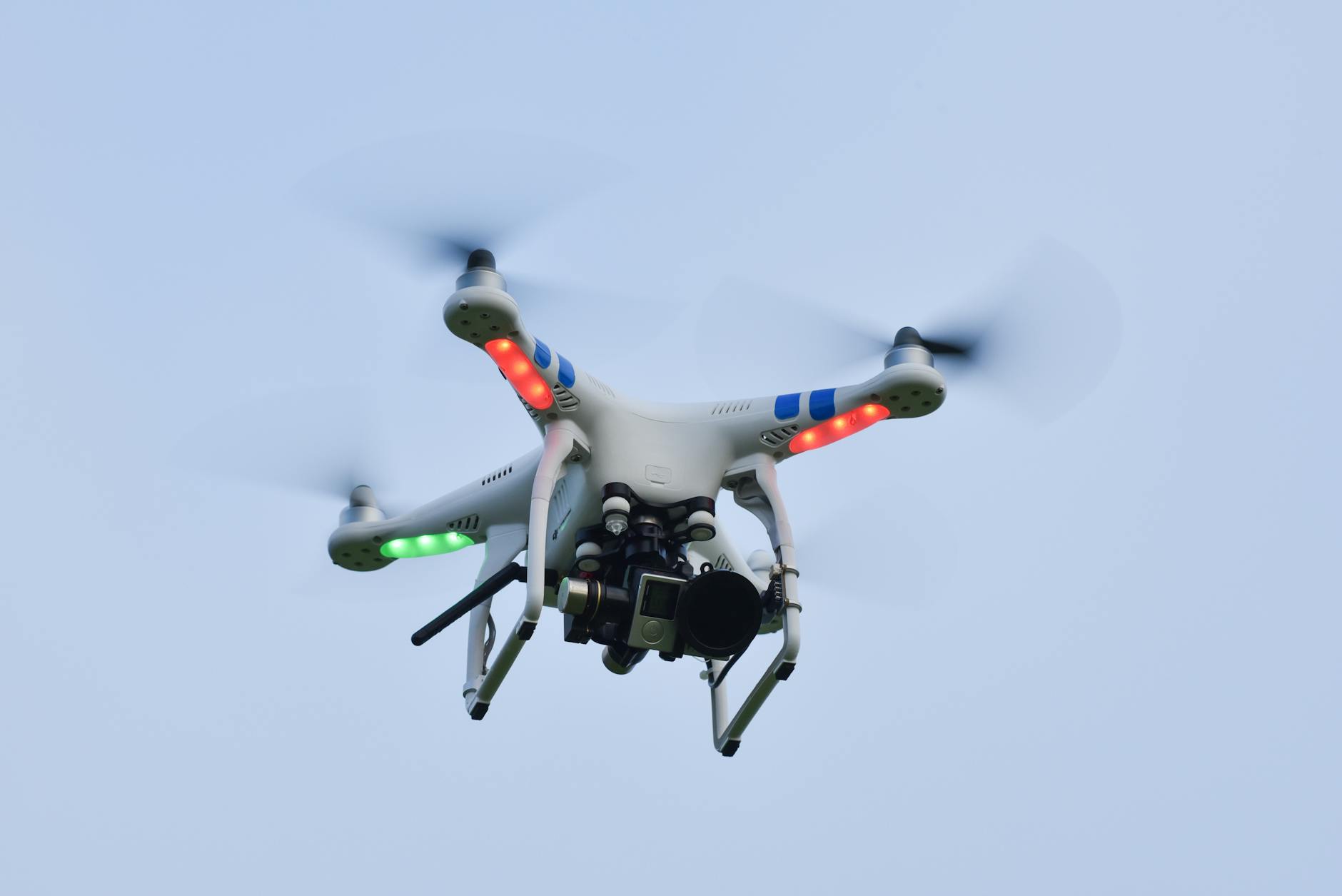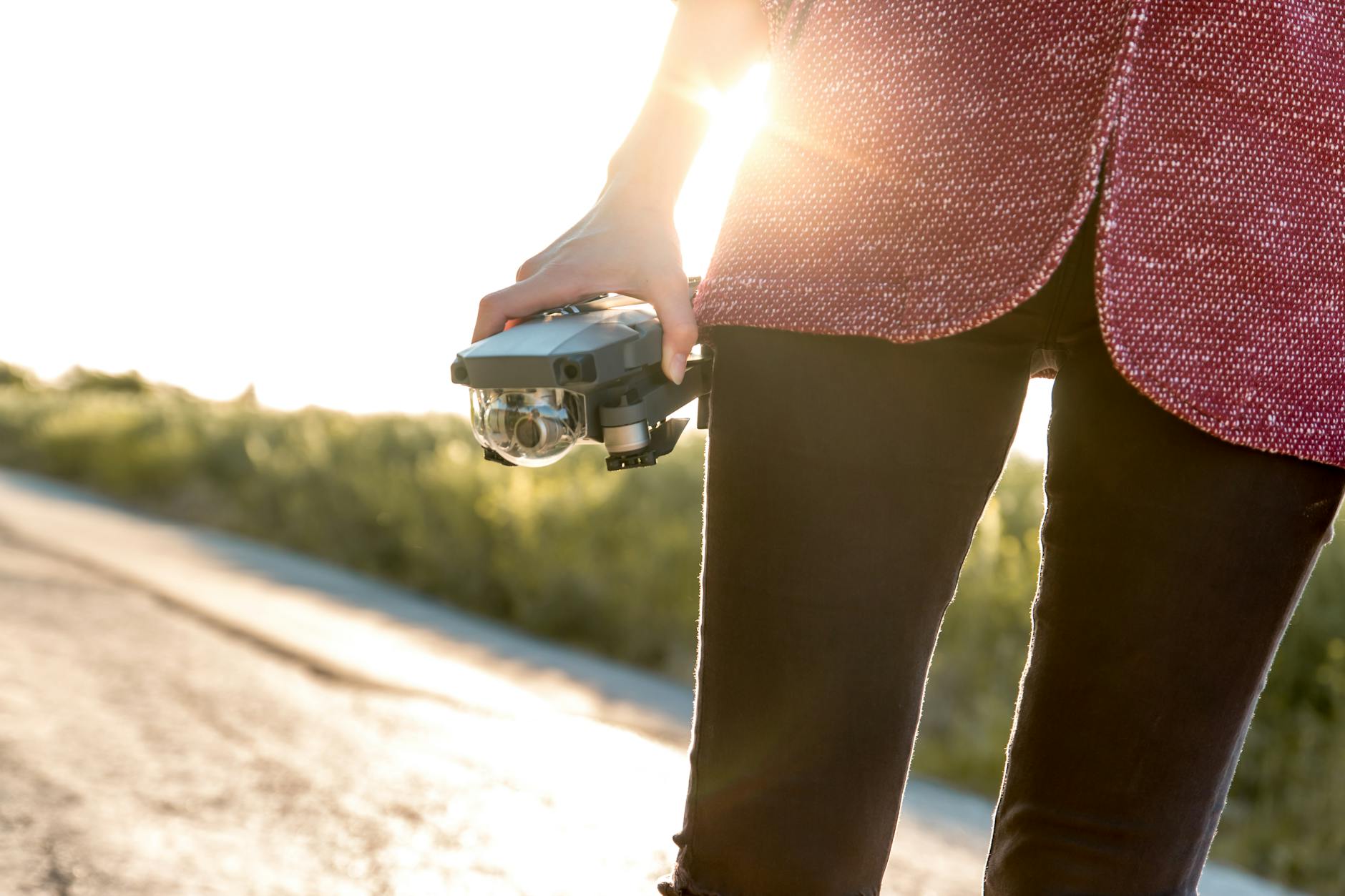Thanks to a rapidly evolving technology, the drones have taken the skies today. The drone is set to dominate the sky very soon if it has not done so already. If you are a new drone owner, you are only joining the drone movement.
The use of commercial drones is growing really fast. The drone, also known as the unmanned aerial vehicle (UAV) has made a huge impact in many fields. These include security, entertainment, photography, agriculture to construction fields.
Here are six tips for new drone owners that will equip you with all you need to know to get started.
#1 Get to Know Your Drone
 Source: Pexels
Source: Pexels
As a new drone owner, the first thing you need to do is to read to understand your drone’s manual. This includes knowing the ins and outs of your drone, how each part functions and its importance. Drones are mainly classified according to:
The number of rotors
Size
Product stage
In classifying drones according to the number of rotors, we have single and multi-rotor drones. In classifying drones according to their sizes, there are various sizes of drones in the market mainly ranging from nano drones to full-size military drones.
The last classification is according to the product stage your drone is once you have purchased it. Here we have ready to fly (RTF), plug and play and DIY module. While drones can differ from another drone by the three classifications, they use similar parts and components.
Here are some of the parts that are sure to be found on every drone.
A camera – your drone camera function is to capture video feed to allow you to have a first-person view (FPV) in real time and maneuver effectively.
Electric speed control – used to control the speed of the motors. Electronic speed control regulates how fast or slow the motors turn.
Flight controller – this is one of the most important parts of your drone. It is considered as the central processing unit of the drone as it houses the flight controls.
LiPo battery – the lithium-ion polymer battery is a rechargeable battery that powers your drone’s activity. It uses a polymer as an electrolyte.
Motor – used to spin the rotors.
Rotor blade (s) – they provide lift for the drone by spinning.
Controller pad – a handheld device used to direct and maneuver the drone.
Power distribution board – this is where all the drone’s electrical components are connected to help draw power from the battery.
Radio transmitter – responsible for converting an analog signal from the camera and convert it to radio-frequency.
To have a deep understanding of how your drone functions, you will need to read your drones manufacturer manual. Doing this will help you to deal with any case of emergency or repair.
#2 Keep the Laws and Regulations
There are so many laws and regulations that surround unmanned aerial flight (s). Just because you own a drone, it does not mean that you can fly it anywhere. These include state and local regulations that regulate drone activity. Before flying your drone, it is advisable to look up your local and state regulations.
The landscape concerning laws and regulations in unmanned aerial vehicle keeps changing each day. This means that even if you had read the laws earlier, you need to keep up with the constant updates in the drone laws.
Knowing the laws will help you understand what flying safely and responsibly means in order to protect yourself as well as other people. Here are some few basic rules you need to know as a new drone owner:
Always Fly Below the Maximum Allowable Altitude
 Source: Pexels
Source: Pexels
There are laws that regulate how high you can fly your drone. As a general rule in the US, it is recommended by the aviation authorities to always fly below 400 feet above ground level. This is because above 400 feet, there is the presence of manned aircraft such as airplanes and helicopters.
Check your local authorities laws for the maximum allowable altitude above ground level because these laws vary from state to state.
Avoid flying over crowds, national parks, airports or a place where a descending drone may lead to injuries.
Fly your drone where you can maintain a visual line of the flight. This means flying your drone where you can see it at all times.
Do not interfere with manned aircraft activities. If you intend to fly within a radius of five miles of an airport, it is your responsibility to contact the airport and inform them.
Do not attempt to fly near sensitive infrastructure and facilities. This includes power stations, roadways, government facilities, chemical labs and water treatment areas among many.
Don’t fly over private property or photograph people when the entity expresses the need for privacy unless you have a permit.
#3 Register Your Drone
As from February 2016, all drone owners are required to register their drones that weigh more than 0.55lbs (250 grams) and less than 55 lbs (25kg) with the FAA.
FAA has an unmanned aircraft registration system that can be accessed online using their official website.
It is a very simple process that will cost you $5 only. Registration applies to all drone owners whose drones are within the stated weight category. A unique registration number is issued once you register and is valid for 3 years. After registering and paying the $5 registration, this unique registration number will be sent to your email.
This registration number can be used for more than one drone. The FAA operates on a privacy policy that will protect your identity by hiding your name and address. This information will not be revealed to anyone even with the use of a freedom of information act request.
The only information made public for searching is the state, city and zip code. This information can be found if searched in the FAA database of registered drone owners.
Failure to register your drone attracts penalties of up to $22,500.
Failure to register could also lead to criminal penalties of up to $250,000 or even imprisonment of up to 3 years. All aspects of criminal charges or violations are considered individually.
#4 Check Your Drone Before Flying it

Source: Pexels
Before flying your drone, it is very important to do a physical check of all its components. Look out for any loose parts or damaged component (s). The rotor blades are a great place to begin.
Check to see if your drone’s blades are firmly attached to ensure they won’t fall off while the drone is in flight. Inspect each blade’s surface for any cracks. If there’s any crack on any blade, it is very important to find a replacement.
Other important parts to physically check to include the camera gimbal, motors, and the battery pack. Check the battery pack and ensure that it is firmly in place and has clicked itself into the locked position. You can try to move it slightly using your fingers to confirm this. You should also do the same to the camera gimbal to ensure it does not fall off in flight.
#5 Check Your Local Weather Conditions Before Flying
Weather is an external factor that will greatly affect your drones performance. As a new drone owner, you need to understand how different weather conditions affect your drone. Have a trust-able local weather forecast in hand before heading out to the field to fly your drone.
Drones have a critical temperature range that dictates the appropriate conditions for optimum performance. Refer to your drones manual for details. These temperatures are the temperatures at which the battery does not freeze or overheat.
Avoid wet weather conditions such as snow, sleet, and rain. This is because most of your drone’s components are not waterproof and any contact with water will greatly affect them. Plan to have short flights in cold weather conditions to allow you to closely monitor your battery. This is because the efficiency of a LiPo polymer battery decreases with colder temperatures and the battery can die suddenly if the temperatures go below zero degrees Celsius.
Avoid flying on windy days, very high speeds of wind will make it difficult for your drone to hold up its position in the air. You should also avoid flying in winds that exceed your drones maximum speed.
#6 Set up the Return to Home Function (RTH)

Source: Pexels
Return To Home function is a feature in your drone that automatically activates itself to allow the drone to fly back to its take-off position once you hit the return to the home button. Make sure you correctly set up the RTH function that is built into your drone and learn how to use it.
To do this, simply turn on the GPS and check to see if your drone has a lock on its present take off position. Program your drone to ascend to the maximum allowable altitude and then let it return home. All this can be done on your mobile app.
The RTH function is very important because it can save you a lot of trouble in case of an emergency. RTH automatically activates itself in the event of loss of signal or low battery. It works by following the GPS location of where the drone took off. If for example, you unknowingly fly many meters away and almost run out of power, the RTH function will automatically turn itself on and return the drone to where it took off.
Jessica is a marketing enthusiast and an influencer in Fashion & FnB verticals. She’s a fashionista and enjoys to have a glass or two of wine with her friends. Her undying love for wine has made her a regular contributor at Remedyliquor too.